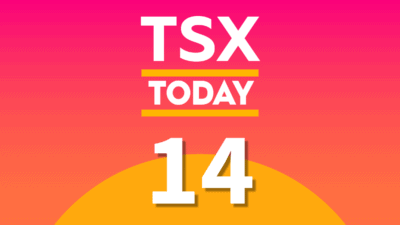Imagine the global stock market as a vast ocean of opportunities. In comparison, Canada’s stock market is just a small part of this expanse, making up about 3% of the MSCI World Index, which tracks large and mid-sized companies across 23 developed countries.
Despite the relatively small size of the Canadian stock market, many investors in Canada tend to stick close to home. There’s a certain comfort in investing in companies that are familiar. And there are practical benefits, too, like the attractive dividends and tax efficiencies that Canadian stocks can offer.
This inclination to favour domestic investments is known as home country bias, and it’s common among investors around the world. Now, having a home country bias isn’t necessarily bad.
However, problems can arise when this bias becomes too heavy, such as when more than half of an investor’s portfolio is tied up in Canadian stocks. That’s when diversification takes a hit.
By including a global ETF in your portfolio, you can tap into the growth potential of markets you might otherwise miss out on. Here’s why.
What you’re potentially missing out on
When Canadian investors focus mostly on their home market, they’re not getting the full picture of what the world has to offer. Canada, while an important market, is just one piece of the global investing puzzle comprised of diverse economies and industries.
To understand what’s out there, it helps to break down the global equity market categories. There are three main types:
- The United States: This is the heavyweight of the global market, representing a significant portion. As a hub of technology and innovation, it’s home to many of the world’s largest companies.
- Developed Markets: These include European powerhouses like Germany, France, and the United Kingdom, alongside other developed nations such as Japan and Australia. These markets have mature economies with established industries and global companies.
- Emerging Markets: Here we find countries on their way up. These include economies like China, India, Brazil, and Russia. These markets can offer high growth potential but come with higher risks due to their developing nature.
Looking at the FTSE Global All-Cap Index, which is a barometer for the worldwide market, it holds approximately 60% in U.S. stocks, 30% in other developed countries, and 10% in emerging markets. This spread reflects the global market’s current shape and size.
If you subscribe to the idea of efficient markets — which suggests that prices of stocks always incorporate and reflect all relevant information — you might want to align your portfolio with these proportions. It means trusting that the global market has priced assets fairly based on available information, and therefore spreading your investments across these areas could potentially offer a balance.
For Canadian investors, it’s reasonable to have a bit more invested at home — let’s say somewhere between 10% to 30% of your portfolio. This slight overweighting in Canada can capitalize on local advantages like tax efficiencies and dividends, as mentioned earlier.
My global ETF pick
My top pick for a global ETF that Canadian investors should consider is iShares Core MSCI All Country World ex Canada Index ETF (TSX:XAW).
This ETF does precisely what its name implies — it offers investors a chance to own a piece of thousands of companies from around the globe, with the notable exception of Canada, all for a management fee of 0.22%.
The fact that XAW purposely leaves out Canadian stocks isn’t an oversight; it’s a strategic move. This absence is a deliberate feature that provides you with the flexibility to shape the Canadian portion of your investment portfolio as you see fit.
You can decide exactly what mix of local stocks you want, allowing you to fine-tune your home bias to the level you’re comfortable with. For some Canadian dividend stock ideas, check out the Fool’s suggestions below!
 Spring Sale
Spring Sale







